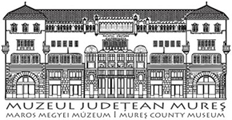Marisia - Maros Megyei Múzeum Évkönyve 35/2. (2015)
Zoology
PRESERVING AND PROTECTING CONDITION OF BIRDS SPECIES IDENTIFIED IN CHI§INÄU Natalia SOCHIRCÄ, Larisa BOGDEA, Ludmila BUCICEANU Institute of Zoology, Academy of Sciences of Moldova, str. Academiei, nr. 1. MD—2028 Chisinau, Republic of Moldova, nataliasochirca01@gmail.com Abstract: The research was conducted during five years consecutively in all phenological periods. On the territory of municipality Chisinau, were identified 110 species of birds, including: 33 are summarized in the Birds Directive, 101 species in the Berne Convention and 13 species in Bonn Convention, law 1538/1998 refers to 18 species of avifauna identified in Chisinau. The most numerous birds are insectivorous and belong to passeriformes class, these serve as a regulator factor of insect pests. The national legislation, as well as international conventions that Republic of Moldova joined, on the issue of protection of bird species is most often not applicable, the latter lead to decreased diversity and abundance of bird species across the territory of the country. Keywords: urban ecosystem, preservation, birds, protection measures, legislation. Introduction Urban ecosystems are of particular importance for environmental protection and biodiversity conservation, establishing itself as a valuable component in creating ambiance between the building blocks and the environment. In the last decades all around the world it was noticed a strong trend of accommodation in cities of the animals and especially birds, finding favorable biotope for food and reproduction [3, 4]. This situation has accured due to an alteration of natural habitats, which can not provide optimal conditions for many species of birds. In such conditions the birds are forced to adapt to new living conditions offered by anthropogenic environment, which is not always hospitable for the vast majority of species of wild birds [3]. This is the reason why a specific attention should be given to birds’ protection that leave in the anthropic environment, and also to habitats (natural or artificial) where these find optimal living conditions. National legislation seems to meet the protection of green spaces. Thus in Law 591/1999 regarding the green spaces of urban and rural settlements, establishes the relationships between development field and protection of green spaces [6]. In the context of this law it is revealed the purpose and the importance of green spaces, namely: a) Green spaces, regardless of belonging and purpose, serve to improve the environment, maintain the ecological balance and local genofond, enrich the assortment of ornamental plants, maintain and protect precious natural objects and harmonizing artificial landscapes with natural ones in order to achieve a favorable ambience for anthropogenic activity. b) The importance of green spaces is subject to the following functions: M A R I S I A, XXXV, p. 133-140
